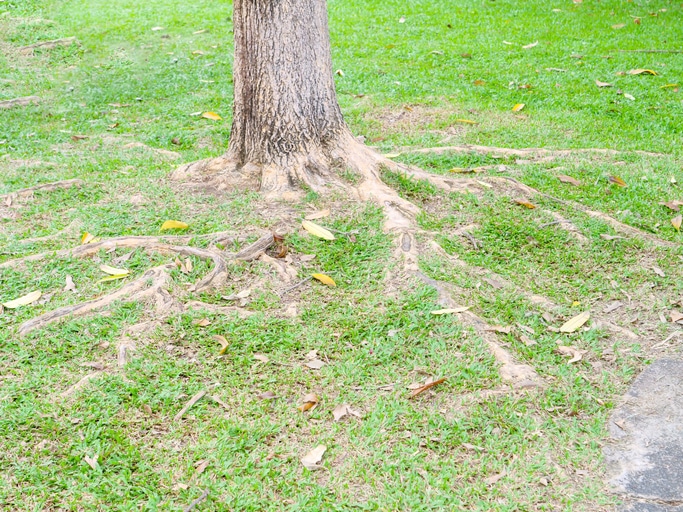Tree and shrub roots can spread throughout your foundation, weakening its structure and causing it to fail. Roots can also drain the soil of needed moisture, causing the earth itself to move your foundation out of place. These problems can reveal themselves as unlevel floors, doors or windows that stick, or an unpleasant musty odor throughout your home.
There are several ways to help protect your foundation from root-related problems. But sometimes the harm has already occurred. If this sounds like your situation, then we urge you to get in touch with us here at Align Foundation Repair and schedule a free inspection from our knowledgeable and experienced professional contractors. Acting sooner rather than later is important, as foundation damage will worsen over time and if left unchecked can be more expensive to repair down the road.
Steps You Can Take to Prevent Root Damage to Your Home
There are a number of time-tested ways to prevent tree and shrub roots from damaging your foundation. These include:
- Choosing your trees and shrubs with care – in general, it’s better to choose slow-growing plants with minimal water needs. Your local landscaper can provide useful information.
- Allowing adequate space between your foundation and your trees or shrubs – for example, hardwood trees should be planted at least 20 feet from your home. Again, your local landscaper or garden center provide advice on specific plants.
- Installing a root barrier – this is a flexible shield constructed from polyethylene (HDPE) that encircles the perimeter of a tree or shrub. When buried or driven into the ground, it directs roots downward and away from your residence.
How Roots Can Make Foundation Repair in Richardson TX Necessary
Here are three ways that tree and shrub roots can pose a threat to your home’s foundation:
- By drying out the earth around your home – trees and shrubs use a lot of water. For example, a mature oak tree can require 50 gallons of water a day or more to stay healthy. By drawing this moisture from the soil around your house, they can cause the foundation to expand and eventually crack.
- By shifting the soil – tree and shrub roots can also change the distribution of dirt around your home, causing your foundation to either heave upward or sink deeper into the ground.
- By digging into the foundation itself – you can think of tree and shrub roots as subterranean spear points that are constantly probing your foundation for weaknesses. Eventually, they will find their way into existing cracks or create new ones altogether, spreading weakness throughout the entire structure.
Foundation Repair Contractors Richardson Texas
If your home is experiencing structural problems, here’s how our foundation repair contractors in Richardson, TX, can help:
- By getting to the “root” of the problem – we’ll use our decades of training and experience to find out exactly what’s going on with your foundation.
- By providing a no-obligation quote for your consideration – so you’ll have the facts you need to decide if you want to proceed with repair work.
- By helping you to explore financing options – we’ll do everything possible to make your Richardson foundation repair affordable.
- By backing our work with our ironclad guarantee – giving you the peace of mind you need to relax and focus on other priorities.
For foundation repair Richardson TX homeowners can depend on, choose the experienced professionals at Align Foundation Repair. Getting in touch with us now will help you to avoid expensive and stressful problems later. If you live in our Richardson foundation repair service area, give us a call or reach out to us online today.


